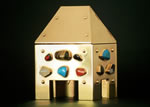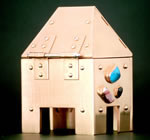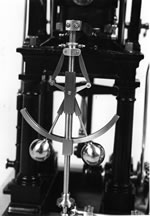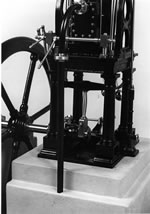

Design Gallery 4
Reliquary

 I only ever made one of these reliquaries, a loose copy of typical medieval
work. Constructed of 1/8 inch copper sheet, flashed with a few microns of
gold, height 4-1/2 inches tall, I hand burnished the gold surface with the
traditional polished agate burnisher. The stones include agate, amethyst,
garnet, quartz, rutile and tigers eye. It is surprising how many man-hours
this project consumed, though I particularly enjoyed making the stone settings.
There are excellent examples of mediaeval metalwork at the Cluny Museum,
Paris, one of my favourite museums and well worth a visit, the entrance
courtyard is wonderfully atmospheric. Please click images to see it in larger format.
I only ever made one of these reliquaries, a loose copy of typical medieval
work. Constructed of 1/8 inch copper sheet, flashed with a few microns of
gold, height 4-1/2 inches tall, I hand burnished the gold surface with the
traditional polished agate burnisher. The stones include agate, amethyst,
garnet, quartz, rutile and tigers eye. It is surprising how many man-hours
this project consumed, though I particularly enjoyed making the stone settings.
There are excellent examples of mediaeval metalwork at the Cluny Museum,
Paris, one of my favourite museums and well worth a visit, the entrance
courtyard is wonderfully atmospheric. Please click images to see it in larger format.
Steeple Engine

I made this working model steam Murdoch
Aitken Steeple Engine when I was about twenty years old, the original appeared
in Blackies 'Engineers and Machinists Assistant' of around 1841, I made
this so long ago I am unsure of the detail. I think one inch
to the foot scale. The
commercially supplied drawings left a lot to be desired, a good practical
engineer should never let himself down with poor draughting and incorrect
dimensions. Yet however a workable engine resulted, lots of
authentic detail such as gib and cotter big ends, fish bellied connecting
rods and split bearings wherever possible. The governor and governing mechanism
worked, though at the time I hand finished the homemade bevel gears which
transmitted the drive so it didn’t run as sweetly as it should have.
The procedure there should have been to produce completely the finished
tooth profile by means of cutters, eliminating handwork; Martin Cleeve
wrote some good articles in mid 60’s M.E. on the subject. I unfortunately
soon sold the engine at Christies in order to raise money for a deposit
on a house, which is a stupid thing to do! Please click images to see it in larger format.
at the time I hand finished the homemade bevel gears which
transmitted the drive so it didn’t run as sweetly as it should have.
The procedure there should have been to produce completely the finished
tooth profile by means of cutters, eliminating handwork; Martin Cleeve
wrote some good articles in mid 60’s M.E. on the subject. I unfortunately
soon sold the engine at Christies in order to raise money for a deposit
on a house, which is a stupid thing to do! Please click images to see it in larger format.
This type of project illustrates the distinct shift in mindset that is utterly essential in differentiating between model engineer type work (ie complication equalling fidelity to prototype) and efficient activity within a factory environment, ie the design and tooling for and manufacture of product, which must always be reduced to its absolute essentials. Likewise all toolmaker made tooling needs to be robust, foolproof and function without fail, this I certainly realised at an early age. But I was to learn a very hard lesson in a test rig at Hardys that has haunted me throughout my life, that in my early twenties as a T6 college project grew to be far too labour intensive, too detailed; endless drawings when finished detail drawings were not needed (note the word 'need') such projects and particularly test apparatus should be quick so that we can learn and develop modified solutions accordingly. I think I was being allowed 'to hang myself' to indeed learn this lesson. Maybe I should have been more closely mentored.
E&OE copyright 2024 © Richard Kell
http://richardkell.livejournal.com - my workshop blog.
 New Products
New Products